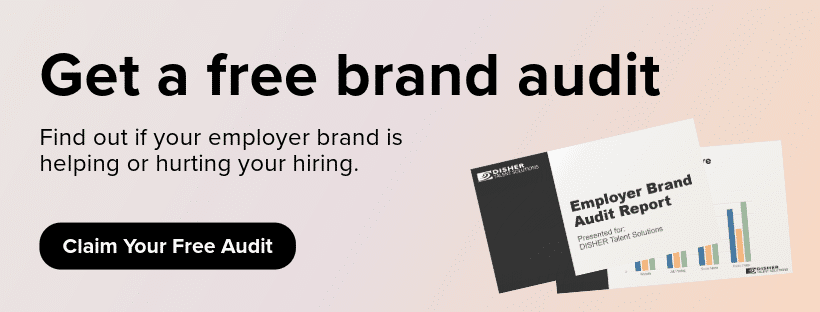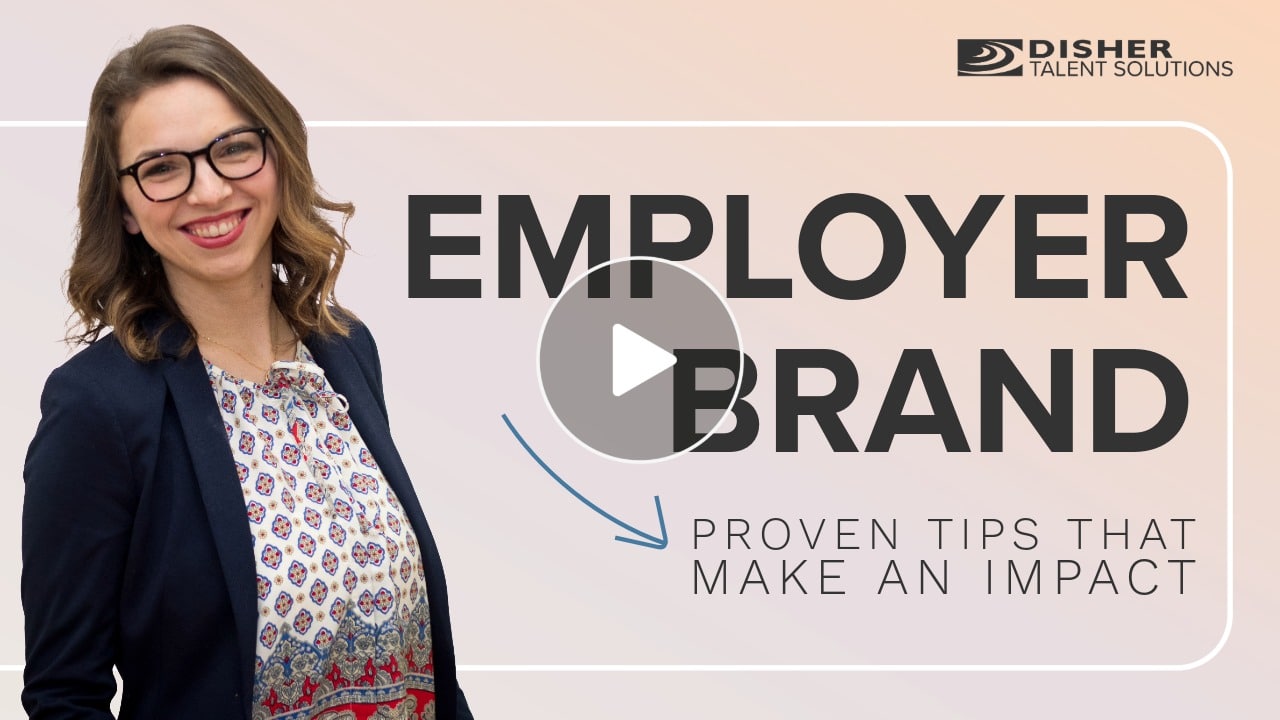
Have you been working hard to attract great candidates but somehow feel like the people you really want keep slipping away? It’s frustrating, and it might leave you wondering: Is something about our company turning them off?
The truth is that even strong organizations can unknowingly send the wrong signals. Your employer brand—how people perceive working for you—plays a big role in whether top talent leans in or walks away.
In this post, I’ll share my experience on how a poor (or just underserviced) employer brand can repel candidates and employees, how to spot the warning signs this might be happening to you, and how you can start to turn things around.
What Is an Employer Brand and Why Does It Matter for Attracting Top Talent?
Your employer brand is the communication of what it’s like to work at your company. It’s shaped by your culture, values, leadership, and the day-to-day experience of employees. This brand isn’t just a “nice-to-have”—it’s a magnet for the kind of talent you want (or don’t want) to attract.
A strong employer brand draws in high-quality candidates, keeps your best people engaged, and reduces turnover. When your brand is weak or inconsistent, it does the opposite: it quietly drives away the very people you’re working so hard to attract and retain.
How Does a Weak Employer Brand Impact Talent?
When your employer brand lacks clarity or authenticity, candidates will notice. They’re researching you online and on social media platforms before ever hitting “apply.” If what they find isn’t interesting enough or doesn’t match what you say, trust erodes fast.
Long-term, a weak employer brand can mean that your employees are less engaged and you become a revolving door of talent. If your employees don’t understand your mission and vision and align with your values, it will be challenging to create a strong employer brand.
What Are the Most Common Mistakes in Employer Branding?
Even well-intentioned companies can undermine their appeal to top talent. Here are a few common pitfalls companies make, their consequences, and what job seekers notice most.
- Lack of strategy: No clear message or plan to share what makes your company a great place to work.
- Inauthentic messaging: Promising perks or culture that doesn’t match reality.
- Ignoring employee feedback: Not listening to your people when shaping your employer brand and messaging.
- Inconsistency: Sending mixed signals across different platforms or over time.
- Neglecting your online reputation: Letting negative reviews or social media comments go unanswered.
How to Evaluate Your Current Employer Branding
It’s important to continuously evaluate your employer brand because it’s always changing. Just to be clear, your mission, vision and values, should not change. However, the brand created by individuals’ experiences with your company is continuously evolving, so it is important to monitor and be proactive.
To get started I recommend auditing your employer brand. At DISHER Talent Solutions, we offer a free audit that looks at your website, social media, job postings and public image. These are good starting places, but it’s also important to also understand your candidate experience and get feedback from your employees.

4 Warning Signs Your Employer Brand Needs Work
1. Negative Employee Reviews and Online Reputation
Nearly every candidate reads reviews before deciding to apply. A Glassdoor survey shared, 83% of job seekers are likely to research a company reviews and rating when deciding where to apply for a job and more than half (55 percent) of job seekers would abandon a job application if they read negative employee reviews online.
Negative reviews can:
- Lower your applicant conversion rate
- Cause top candidates to reject offers
- Damage your brand for years to come
However, responding to reviews has a significant impact on how they are received. When companies take the time to respond to reviews, 71% of Glassdoor users say their perception of that company improves.
How to respond:
- Be prompt to show you value feedback
- Stay professional and remain calm even when addressing negative feedback
- Be sincere and avoid using a templated response
- Offer solutions when available or invite to take the conversation offline
2. Candidates Ghosting and Dropping Out of Hiring Process
Candidate ghosting is on the rise. The top reasons candidates disappear include:
- Receiving another job offer
- Feeling the job or company isn’t a good fit
- Unclear or slow communication from the employer
- Pay or benefits not meeting expectations
If your process is slow, unclear, or impersonal, you’re making it easier for candidates to walk away.
How to respond:
- Provide consistent updates and communication with candidates
- Communicate clearly about salary ranges and expectations
- Understand where candidates are at in their search process and be honest about the interview timeline and process
3. Red Flags Candidates Notice in Job Descriptions and Company Culture
Top talent pays attention to the details. Here’s what sends them running:
- Vague job descriptions with buzzwords but no substance
- Signs of a toxic or exclusionary culture
- Lack of transparency about pay, growth, or expectations
- Overly rigid requirements or outdated benefits
If your job postings don’t reflect the real experience or your culture feels closed off, you’re losing the best people before they even apply.
How to respond:
- Use job postings to tell candidates a story about why they want to join your team
- Communicate through job postings and interviews in an engaging but authentic way, candidates can tell if when it’s surface level and when it’s real
- Stay on top of benefits and employee expectations that will attract top talent (flexibility, vacation time, and additional support and fun perks)
4. Poor Communication During Recruitment
Every interaction with a candidate shapes your brand. Slow responses, generic rejection emails, or lack of feedback all add up. Candidates remember how you made them feel, and they’ll share those experiences online or with their peers.
How to respond: Clear and timely communication is one of the simplest ways to stand out.
How to Start Rebuilding a Damaged Employer Brand
Rebuilding trust takes time, but it’s possible. Start by:
- Owning past mistakes and communicating what’s changing
- Gathering honest feedback from employees and candidates
- Responding to negative reviews with transparency and empathy
- Showcasing real improvements in culture, benefits, or leadership
Consistency and honesty are your best tools for repairing a damaged brand. Check out the video I made below with four more tips to help you start building.

Read to Attract Top Talent? Here’s Your Next Move
Your employer brand is more than a slogan—it’s the sum of every experience, interaction, and story that candidates and employees share about your company. If you’re serious about attracting the best talent, start by looking honestly at what your brand is saying today.
Ready to turn your employer brand into your biggest recruiting asset? Start with our free employer branding audit.




